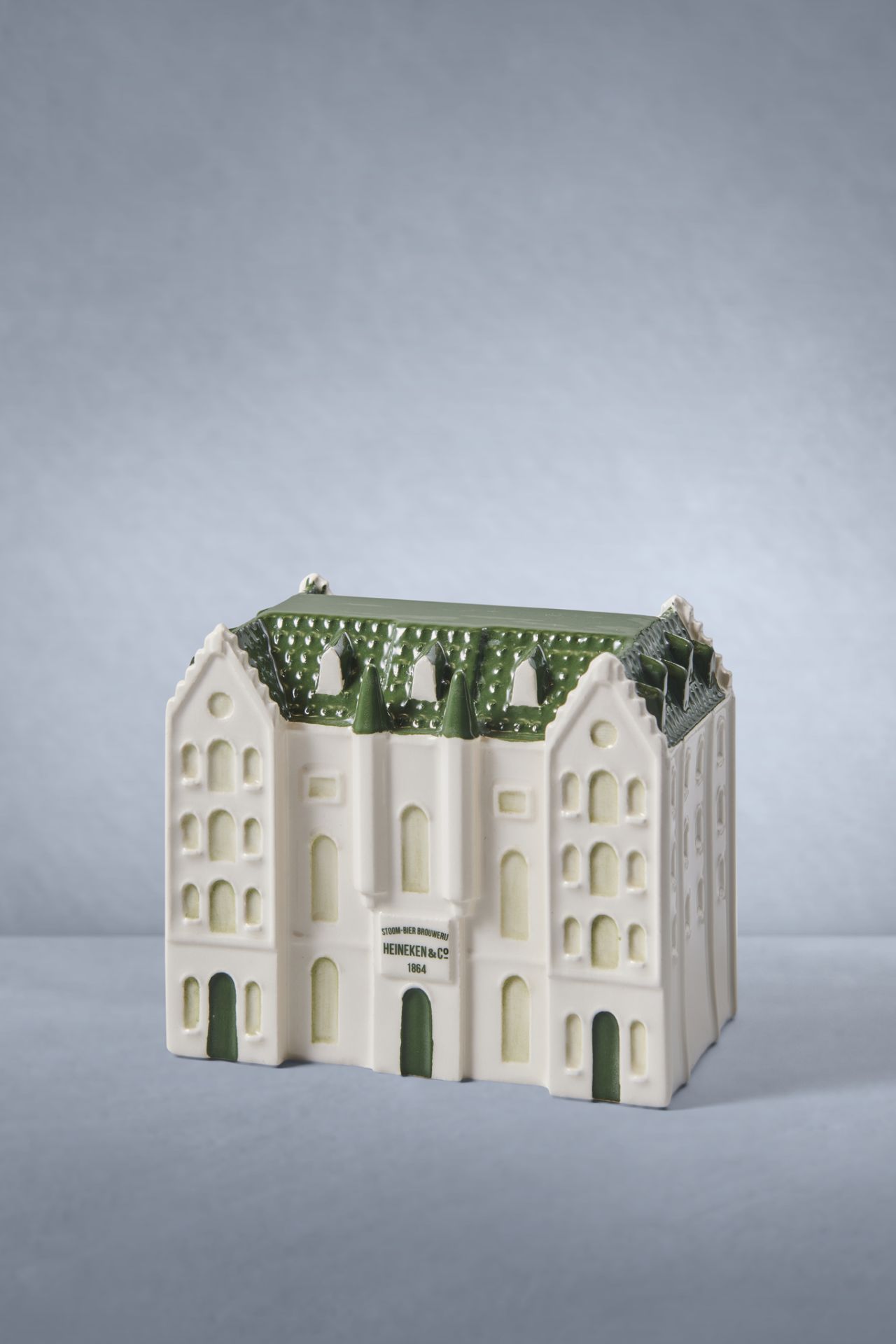INFO
Miniature Heineken brewhouse built in 1867
Royal Goedewaagen
2014
Earthenware
h 9 x w 10,5 x d 6 cm

Brewing in miniature
In celebration of Heineken's 150th anniversary, three historic buildings of the Amsterdam brewery were recreated as Delft blue earthenware miniatures in 2014. Crafted by Royal Goedewaagen, two were commissioned by Heineken, and one by KLM to mark its 95th anniversary that same year. Founded in 1610, the pottery factory in Nieuw-Buinen, a Drenthe peat colony village, is renowned worldwide for its handcrafted ceramics.
Goedewaagen introduced the first Delft blue miniature of a historic building in 1932. Since then, over 400 different miniatures, including canal houses and windmills, have been created for clients globally.
Tradition meets technology
In its manufacturing process, Goedewaagen unites tradition with cutting-edge technology. Two-dimensional design drawings are digitally transformed into a three-dimensional matrix serving as the basis for the mould. Furthermore, production follows traditional methods: the miniatures are poured into the moulds and after firing, ceramic painters hand-paint the white base glaze. This distinction grants Royal Goedewaagen the title of National Ceramic Heritage – the only company in the Netherlands authorised to carry this designation.
The brewing process defines the building process
Together, the three miniatures symbolise the construction history of the modern steam beer brewery, built by order of Gerard Adriaan Heineken on Amsterdam's Stadhouderskade in 1867. The brewing process was powered by a massive steam engine located up in a boiler house with a separate factory chimney. The complex was designed by the architect Gosschalk.
The first and oldest building
The first miniature, a replica of the old brewery, was produced by Royal Goedewaagen in a run of 86,000 copies as a gift for all Heineken employees worldwide. For this occasion, the roof was coloured a Heineken green instead of Delft blue. The stepped gables conceal storage for malt, hops, and casks, as well as the cold store. Behind the middle gable was the brewhouse, along with the fermentation room. Above the monumental entrance gate of the actual building one sees ‘1867’, the year of completion, while the miniature mentions 1864: the year Heineken bought its very first brewery: De Hooiberg (The Haystack), near Dam Square.
KLM brewhouse
The second miniature represents the new 1913 brewhouse, designated a 'KLM house.' Since 1952, the airline has given every business class passenger a Delft blue miniature of a distinctive Dutch building, filled with jenever (gin). The brewhouse, the oldest standing part of the brewery on Stadhouderskade, is now the heart of the Heineken Experience. This is where malt was once brewed in warm water in huge kettles to produce wort, the basis of beer.
Cellar building
The third miniature showcases the striking 'cellar building' on the corner of Ferdinand Bolstraat, designed by Bert and Willem Ouëndag (1932-1935). The windowless lower section housed fermentation and lagering cellars, while the top, featuring the so-called coolship, has numerous windows. Here, huge vats of boiling hot wort from the brewhouse could rapidly cool, before the addition of yeast to convert the sugar from the brewing mixture into alcohol and carbon dioxide: beer!